Flexispot OC3/BS3 Review
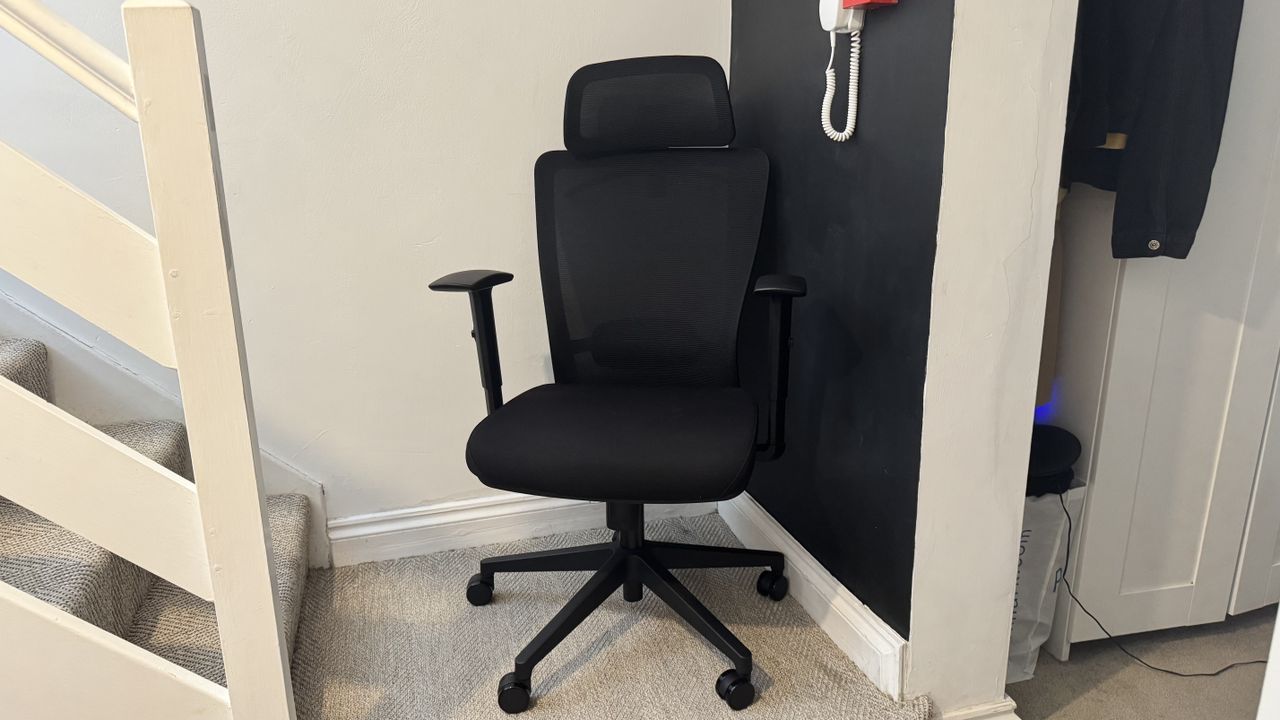

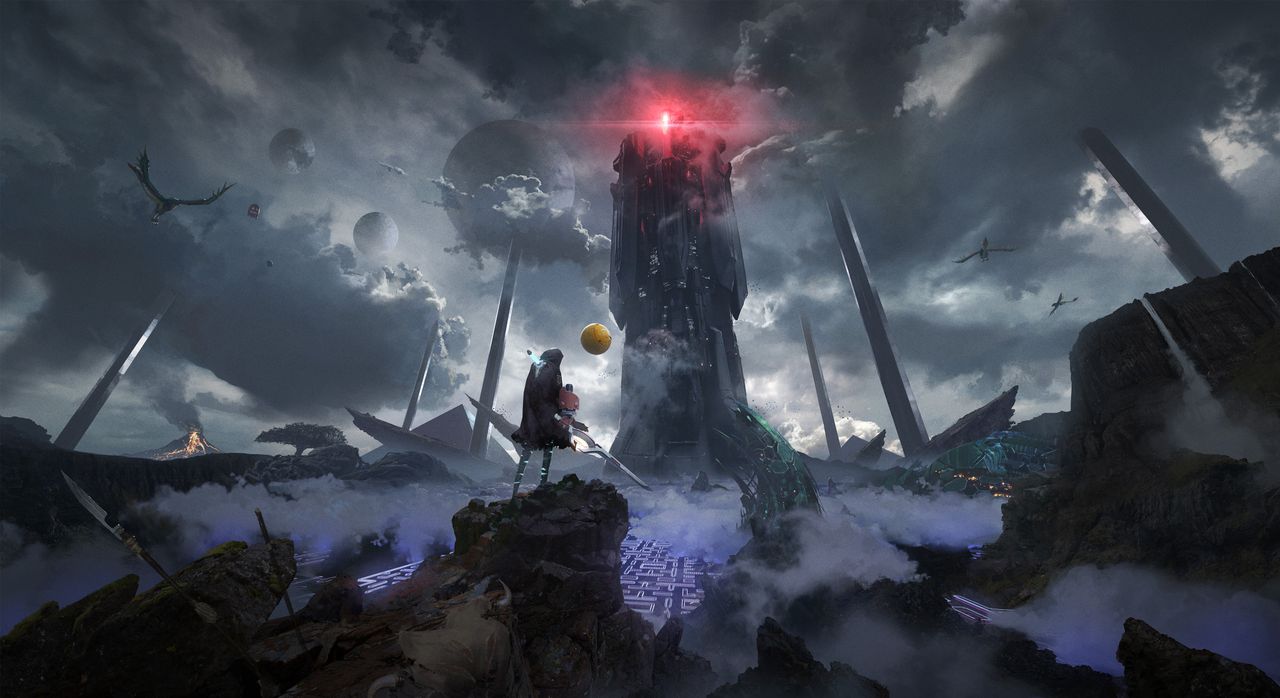

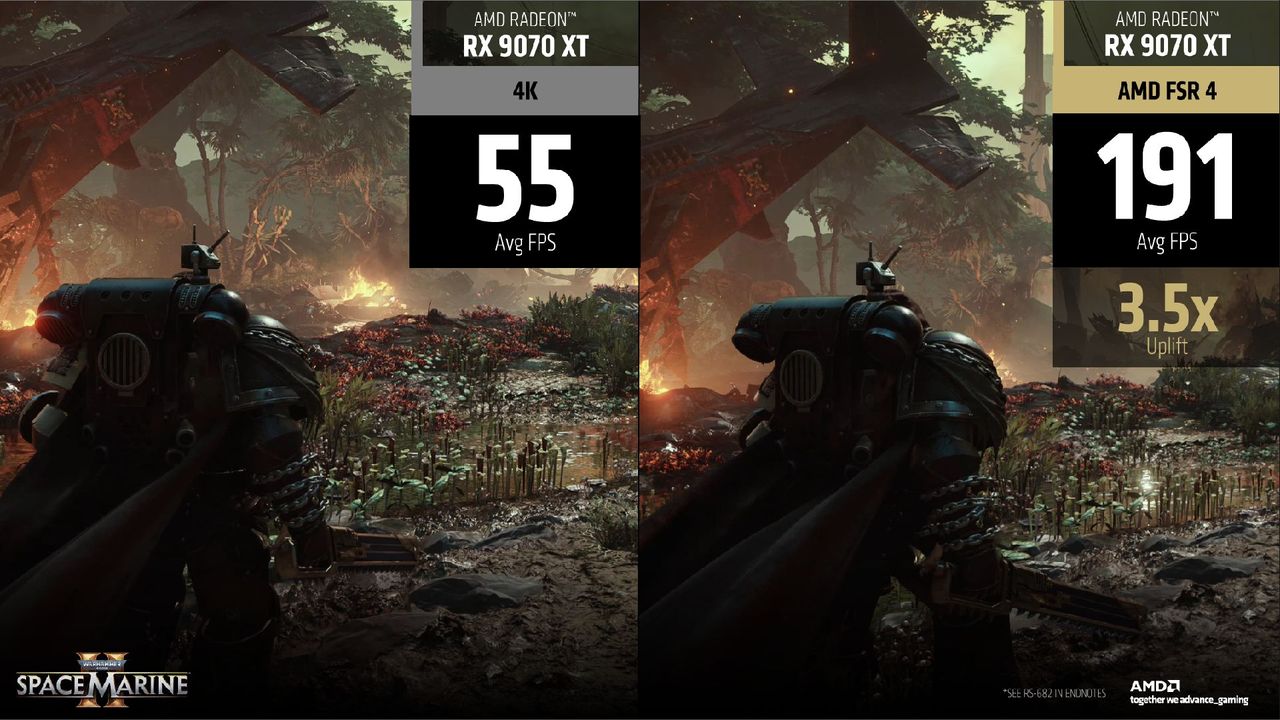
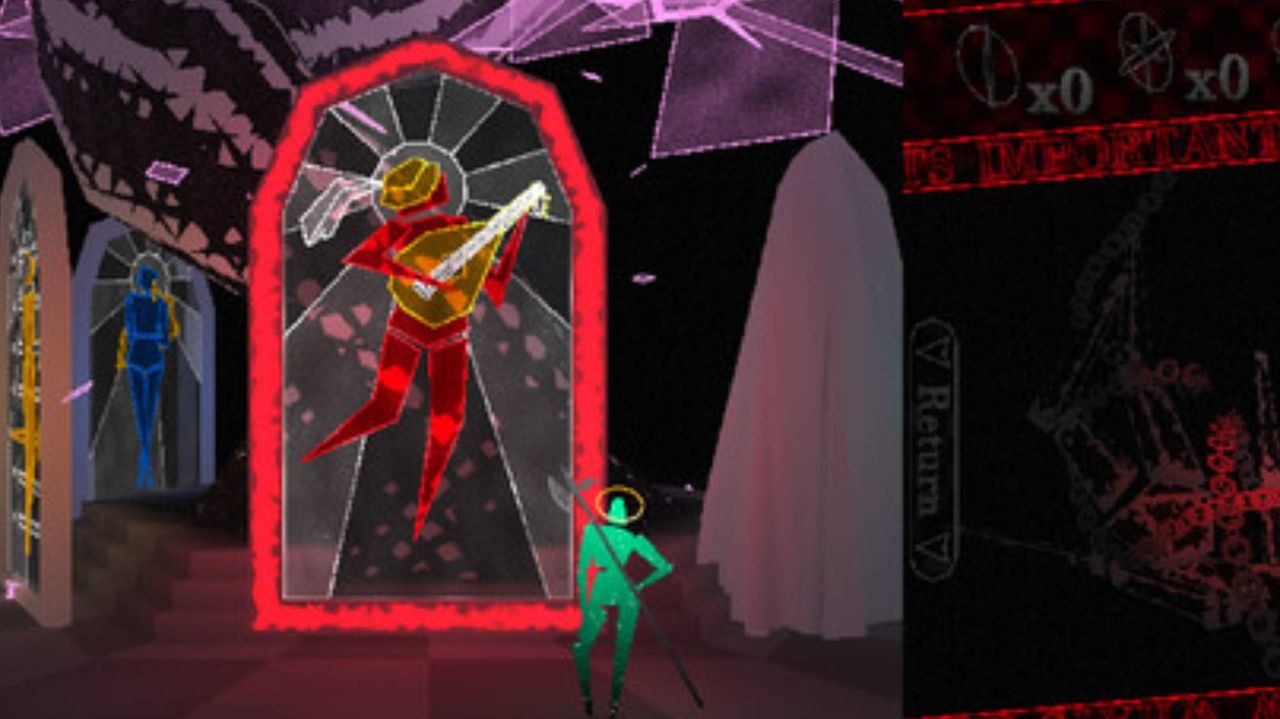

Netflix is finally ready to move forward with its live-action Assassin's Creed series, five years on from when the project was first announced.
In a press release today, Netflix said it had now officially greenlit its Assassin's Creed project, which will now be headed up by Roberto Patino and David Wiener, previously showrunners on DMZ and Halo, respectively. Both will serve as creators, showrunners and executive producers on the series, alongside input from Ubisoft.
"Beneath the scope, the spectacle, the parkour and the thrills is a baseline for the most essential kind of human story — about people searching for purpose, struggling with questions of identity and destiny and faith," Patino and Wiener said in a joint statement.
"It is about power and violence and sex and greed and vengeance," the pair continued. "But more than anything, this is a show about the value of human connection, across cultures, across time. And it's about what we stand to lose as a species, when those connections break."
So, what's been taking so long? Over the past five years, several creatives have joined and left the project — including Die Hard writer Jeb Stuart — though details of what's been happening behind the scenes remain scarce.
There's little to go on now, either, regarding a potential historical focus for the series, or how deeply it may tie into the franchise's established video game universe.
"When we first announced our partnership with Ubisoft in 2020, we set out with an ambitious goal to bring the rich, expansive world of Assassin's Creed to life in bold new ways," said Peter Friedlander, Netflix's Vice President, Scripted Series. "Now, after years of dedicated collaboration, it's inspiring to see just how far that vision has come.
"Guided by the deft hands of Roberto Patino and David Wiener, the team has carefully crafted an epic adventure that both honors the legacy of the Assassin's Creed franchise and invites longtime fans and newcomers alike to experience the thrill of the Brotherhood as never before."
Of course, this isn't the first live-action Assassin's Creed adaptation. The franchise's big budget Michael Fassbender-starring movie launched in 2016, albeit to something of a mixed reception — and Ubisoft has subsequently reflected on the lessons it learned from making that.
Back in the world of video games, the main Assassin's Creed series shows no signs of slowing down. The feudal Japan-set Assassin's Creed Shadows is due its first major expansion before the end of 2025, and fans are now awaiting the highly-anticipated announcement of an Assassin's Creed: Black Flag remaster. After that, the witchy-looking Assassin's Creed Hexe is already in development, for launch sometime in the back half of this decade.
When will Netflix's own Assassin's Creed effort debut, in amongst all of that? Today's announcement does not say, but things do at least seem to be moving in the right direction.
Tom Phillips is IGN's News Editor. You can reach Tom at tom_phillips@ign.com or find him on Bluesky @tomphillipseg.bsky.social

Razer has brought its officially licensed Pokémon collection of accessories to territories outside of Asia, meaning you can now get your hands on an official Pokémon mouse, keyboard, headset, or deskmat.
Razer announced today that it has partnered with The Pokémon Company to bring an official line of Pokémon accessories to the U.S., Latin America, Europe, Australia, and New Zealand. Previously, official Pokémon x Razer accessories were only available in Asia.
The initial set consists of a Razer BlackWidow V4 X keyboard, a Razer Kraken V4 X headset, a Razer Cobra mouse, and a Razer Gigantus V2 deskmat. All four items feature the same theme, solid yellow and a pattern of Pikachu, Squirtle, Bulbasaur, and Charmander's faces similar to the art used in mobile game Pokémon Shuffle.
Prices are as follows:
All four items are now available for purchase.
Rebekah Valentine is a senior reporter for IGN. You can find her posting on BlueSky @duckvalentine.bsky.social. Got a story tip? Send it to rvalentine@ign.com.

The Elder Scrolls IV: Oblivion Remastered development studio Virtuos has said it remains "fully committed" to ongoing work on the game, as well as its contributions to Cyberpunk 2077 and Metal Gear Solid Delta: Snake Eater, despite shedding up to 270 staff.
In a statement today, Virtuous said it was "evolving to meet the changing needs" of its partners and the wider video games industry by cutting several hundred staff members, predominantly from its Asian workforce.
Describing the job losses as a "rebalancing of roles across our studios and geographies," Virtuos said its changes would impact 200 roles in Asia and a further 70 roles in Europe.
Still, the company has made clear that its team behind the recent, well-received Oblivion Remastered is not among those hardest hit. "Fewer than 10" roles will be impacted in France, Virtuos continued, "where the core team working on Oblivion Remastered is located." Oblivion Remastered update 1.2 will soon be released widely.
Ongoing work on Cyberpunk 2077 — which only today received its latest patch — will continue, Virtuos assured. The same is also true of its team working on Metal Gear Solid Delta: Snake Eater, due out on August 28.
Discussing its staffing changes in more detail, Virtuos said the company's focus had shifted over the past 12 months after acquisitions of teams in North America and Europe, and it was now "selectively exiting service segments where demand is weakening."
"We are grateful for the contributions of those impacted," Virtuos concluded. "We are providing separation packages, career transition assistance, and opportunities for redeployment across our global network where possible. The company's immediate focus is on managing this transition with care, transparency, and respect."
Headquarted in Singapore but with studios across the world, Virtuos employed 4,200 staff before these latest layoffs. The company is a renowned co-development partner that has contributed to a laundry list of recent blockbuster games, from Hogwarts Legacy to Call of Duty, and Horizon Zero Dawn to Mortal Kombat 1.
Virtuos' Cyberpunk 2077 Update 2.3 is available today for all platforms and adds new vehicles, jobs and a photo mode to CD Projekt's futuristic open-world, while CD Projekt itself is busy building Cyberpunk 2.
Tom Phillips is IGN's News Editor. You can reach Tom at tom_phillips@ign.com or find him on Bluesky @tomphillipseg.bsky.social

Joker star Joaquin Phoenix recently returned to The Late Show after a whopping 15 years — but something else also happened: he apologized for his infamous David Letterman interview from 2009 that took place on the show before Letterman turned the reins over to Stephen Colbert.
“When I came on this show with Dave, I originally did the pre-interview in character and I realized that it was just a little silly, so I called them back and I said, ‘Listen, this is what I’m doing. I’m coming out here and I’m doing this whole thing. And I just want Dave to like, lacerate me. I just want it to be really dangerous,'” Phoenix told Colbert on July 16.
“That was the kind of intention,” he continued. “I just always wanted to get this reaction and see how I would respond to that. So it was beneficial for no one to know, except when needed.”
Phoenix went on to admit the interview ended up being “horrible” despite giving the team a heads up, adding: “It was so uncomfortable. I regret it, I’ll never do it again. I’m so sorry.”
Funnily enough, Colbert quipped back to Phoenix’s apology. “I don’t know if [Letterman’s] watching,” he joked, to which the actor responded. “He might be and I just need to say, I’m sorry.”
However, Phoenix made sure to double down before concluding. “It was strange because in some ways, it was a success, and it was also just one of the worst nights of my life,” he said.
The actor — who made the recent late night appearance to promote the new Ari Aster film Eddington, in which he stars — was a guest on the show in 2009, looking unkempt and worse for the wear while acting fully in character to support the release of his mockumentary film I’m Still Here. The film followed his life after a gag announcement that he’d left acting to pursue a rap career, and it included the deeply awkward and bizarre interview, which ultimately led the public to think Phoenix was suffering from mental illness.
He famously first apologized for the interview directly to Letterman on air the following year in 2010. “I hope I didn’t offend you in any way,” Phoenix said at the time. “You’ve interviewed many, many people and I assumed that you would know the difference between a character and a real person, but I apologize.”
Photo by John Paul Filo/CBS via Getty Images.
Lex Briscuso is a film and television critic and a freelance entertainment writer for IGN. You can follow her on Twitter at @nikonamerica.

Horror fans have an exciting new 4K steelbook coming their way, and just in time for Halloween this year. The 1990 remake of Night of the Living Dead, directed by horror special effects legend Tom Savini, is getting a 35th anniversary 4K steelbook (see here at Walmart). It's set to release on September 23 and is available to preorder at a few different retailers. This steelbook is also filled to the brim with exciting bonus features, which you can find listed in further detail below.
The movie is available for $39.99 at Walmart, and for a buck and a half more at Amazon and Target. Amazon will likely price match Walmart prior to release, but there's no guarantee.

Not only does this steelbook come with exciting interviews and featurettes, but it also comes with an Uncensored Cut of the film in 4K alongside the original theatrical cut. It's a real treat for fans. Here's the full list of bonus features that come with the Night of the Living Dead 1990 4K steelbook:
DISC ONE - 4K BLU-RAY
DISC TWO - BLU-RAY
If you're looking to pick up some more movies to add to your library this year, it's worth having a look at our breakdown of upcoming 4K UHD and Blu-ray releases. Here, you can see a wide variety of films and shows that are set to release in a physical format over the next few months, so you can plan ahead to grab the ones that catch your eye. There are other popular zombie movies coming out with 4K releases worth checking out as well.
Hannah Hoolihan is a freelancer who writes with the guides and commerce teams here at IGN.

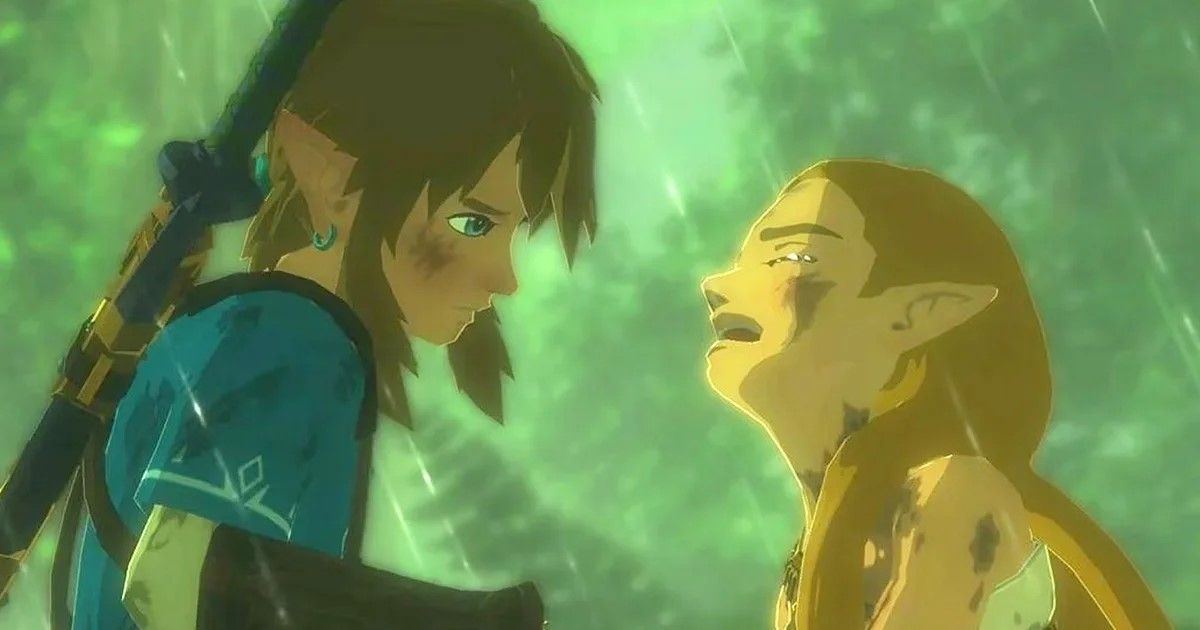
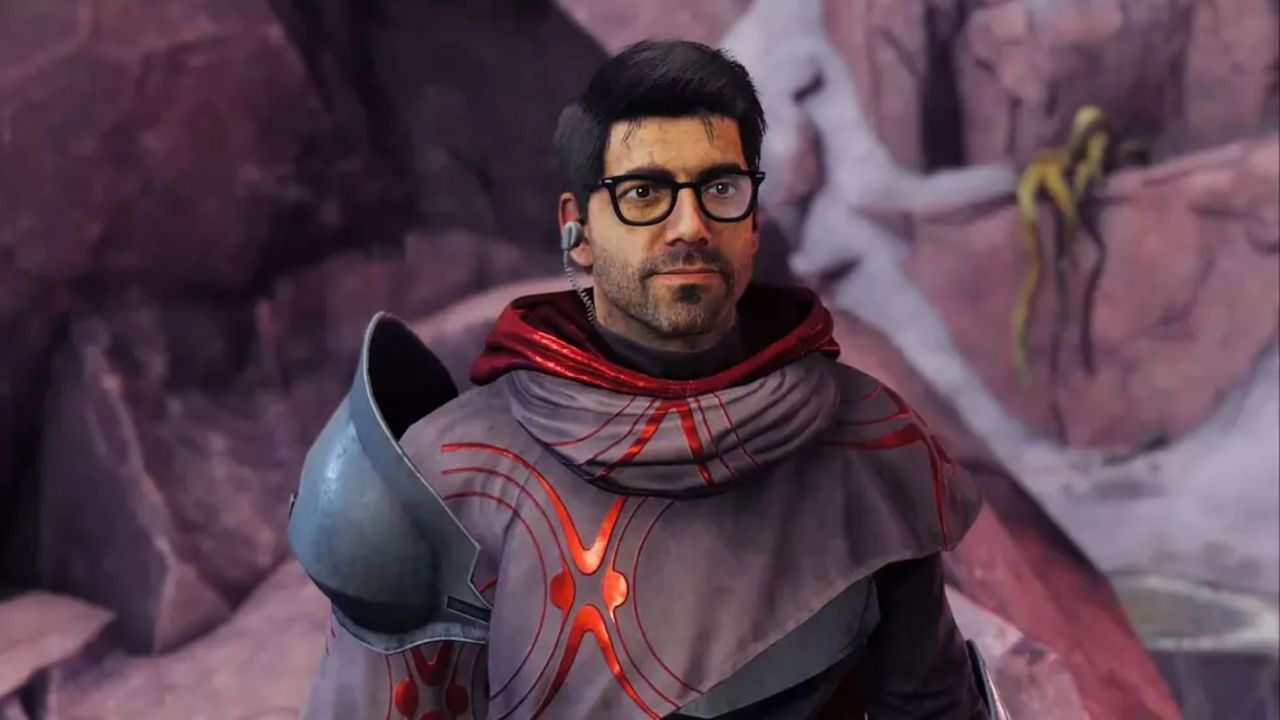

When you picture a tablet, chances are that something like the iPad comes to mind: a bright, colorful screen, pages of apps, social media, games, and video all at your fingertips. But if you’re the kind of user that needs to buckle down and get work done, or are looking for a reading tablet experience that’s easier on the eyes, the Boox Note Air 4C might be for you. Featuring a color e-ink screen, paper-like writing experience, and Android 13 for Google Play Store access and app compatibility, it’s one of the most fully featured, minimal distraction devices I’ve tested. Its oodles of apps put it in a different class than many of its competitors, like the Remarkable Paper Pro, basically making it the e-ink equivalent of a Galaxy Tab with a few extra features for writers, readers, and artists.
The Boox Note Air 4C is a multifaceted device, at once a digital notebook, sketchpad, typewriter, Android tablet, and e-reader. It uses a 10.3-inch e-ink screen, which is the company’s current niche in the tablet market, and is one of its latest releases to feature a full color display. It’s designed to minimize, if not obliterate, distractions, making it a compelling choice for students, teachers, and mainstream users that enjoy the e-ink experience and the reduced eye strain and paper-like reader experience it can offer.
The Note Air 4C uses a Kaleido 3 display, which is the most recent release from E Ink, the company behind ePaper displays. This allows the 4C to display a full range of hues while still maintaining its parchment-like reading experience. It has natural benefits for reading PDFs with graphics and browsing the web, rendering color for a more accurate and engaging reading experience, and because the Note Air uses Android 13 for its operating system, it also makes using apps feel clean.
In short, it effectively brings together a normal tablet experience with the ePaper format… with one key exception: video.

As the technology stands right now, e-ink displays are simply not ideal screens to watch video. They don’t need to refresh like LCDs do. Because the technology works in a fundamentally different way to other types of screens, once the ink is charged and positioned, it can theoretically stay there forever, maintaining the image even after the device is turned off. Boox tablets refresh more frequently and include different modes that control how quickly it refreshes. Even at its fastest, however, watching videos is bad. At best, you’ll make out what’s going on with a perpetual sense of motion blur. On the other hand, it’s fast enough where you can use one of its faster refresh modes and scroll webpages or play a game of Threes easily.
Somewhat counterintuitively (compared to what you would normally look for in an Android tablet), this low refresh rate is one of the qualities that makes it so appealing. It’s just not feasible to use the device for distracting videos, and though you can use it for things like browsing social media, your phone will always provide a superior experience.
It goes without saying that the technology is completely different from other displays. A layer of ink particles below the screen form into text and images through electromagnetism. Above this layer is a color filter and another layer for its EMR stylus. There’s also a tiny degree of separation to accommodate its color-temperature controlled backlight. Compared to a black and white e-ink display, like the Boox Note Max or Viwoods AiPaper, there’s more depth to the screen here, so ink isn’t as immediately pooling under your stylus tip. The image is also darker, which is why that backlight layer is important when many monochrome e-ink tablets leave it out entirely.

The specs are solid for a digital notebook. It’s a bit more compact than much of the competition at 10.3 inches. The Supernote and Viwoods AiPaper each have 10.7-inch screens and the Remarkable Paper Pro is a chonker at 11.6 inches. Its screen measures 8.3 x 6.1 inches, though its full footprint is a bit more square at 8.9 x 7.6 inches. Either way, it’s slim and exceptionally easy to carry, and while it's still heavier than a paper notebook, it weighs in at 420g / 0.93 lbs while sporting both a case (when purchased through Boox) and a pre-applied paper-like screen protector.
Because of the layer-and-filter approach to colorizing its display, the Air 4C has two different resolutions and pixel densities. The black and white resolution is 2480x1860, or 300 pixels-per-inch (PPI), while color is only 1240x930 150 PPI. This was concerning at first, however it doesn’t make a huge difference in real-world use. Since black and white makes up text and, most often, the sharpest details you’ll perceive anyway, the lower density of the color filter wasn’t even that noticeable to me.
Memory and storage – 6GB of memory and 64GB of storage – aren’t the highest but they don’t need to be for a minimalist tablet like this. Since you’ll primarily be storing ebooks, documents, and productivity apps, this should last you quite a while, but it also comes with a microSD card slot to add additional storage.

The processor is a Snapdragon 750G, octa-core, with a top speed of 2.2GHz but frequently runs much slower than that. Despite it being a 5-year-old processor, it gets the job done. Still, for a new, expensive e-ink tablet, I really would have liked to have seen something a bit more modern. It works, but there are times when heavier Android apps can feel a little sluggish (like Office 365) when booting or transitioning screens, and a newer chip would have definitely helped with that.
While its purpose, display, and related specs differ from a normal Android tablet, in other ways it’s right in line with what you would expect. It supports Wi-Fi and Bluetooth 5.1. You can enter the menu system and find most of the same categories and options, which is especially useful if you’re already familiar with the operating system and significantly reduces the learning curve. It also means that you can customize the home page, organize notes and files, and navigate its file system more intuitively than something proprietary. Again, that’s if you already have experience as an Android user. If you’re new to Android, getting used to its layout, features, and menu systems will take some getting used to (but it’s not difficult if you’ve used a tablet or larger smartphone in the past).

It also has access to the full Android ecosystem and has the Play Store installed by default. Obsidian, OneNote, Google Drive, Office 365, ChatGPT… all of these things are readily available and, for the most part, work very well. This allows the Air to be much more versatile than something like the Remarkable Paper Pro, more easily integrated into different workflows, and offer wider support for backup to any service supporting Android.
Boox includes a fairly basic pencil with the tablet and outfits it with a high friction nib. There’s no eraser, which bothered me until I discovered that scribbling over what you don’t want erases every stroke beneath it. There’s a nice scratchiness to writing on the bare screen that makes it feel a bit more like paper (no tablet is a perfect match, in my experience) and improves the accuracy of your strokes. If you do want to change out the stylus, that’s easy to do thanks to the widely adopted Wacom EMR technology standard. There are lots of options out there, including premium options from LAMY, Pilot, and Staedtler, but anything with EMR will do. Because the technology works with magnetism, none of them need to charge either, so they’re always ready to go.
A huge part of the user experience comes down to the software and features that Boox bakes into the device. While this could be broken down within the Design and Features section, it's so critical to using the Air 4C that it makes up a core portion of its performance and my impressions having used it for the last month. Simply put, this tablet offers a ton, from reading to writing to planning, documenting, collaborating, and more.
Before getting to that, though, let's talk about how it actually feels to use physically. Because the tablet is relatively compact and lightweight, it's easy to carry through the day and hold with one hand. The texture on the screen is good and makes for an enjoyable writing experience. However, Boox's newer Note Max is a bit better for writing, in my opinion, due to the reduced layers on the screen making the ink appear minutely closer to the tip than the 4C.

In fact, it's fair to say that the display is probably the Air's biggest selling point and its biggest concession. Because of the additional layers in its design, it's noticeably darker than its monochrome counterparts, especially the Viwoods AIPaper. This can be made up with the backlight, and I have to give Boox credit for allowing you to customize the color temperature from cool white to nearly amber, but I feel like it loses a small piece of the newspaper-like e-ink appeal. I found that keeping the backlight relatively low helped mitigate this while still maintaining good visibility, even in poorly lit environments.
For writing, these layers also result in ever so slightly more distance between the tip of your stylus and the e-ink below. While minor, it is noticeable, especially when A/B comparing it against non-backlit Carta 1300 displays. Don't get me wrong: It's still perfectly functional as a writing and sketching device and remains pleasant to use, but the difference is there and worth considering if writing is your primary purpose above all else.

For color content, such as PDFs with illustrations and ebooks like graphic novels, this display is a major upgrade from monochrome. While color rendition is nowhere near as vivid as an LCD or OLED display, it still offers a much better viewing experience for any kind of imagery. Graphics are clearer and more engaging, and contrast is much less fiddly.
Reading through one of my collected editions of classic Tales from the Crypt, the difference was night and day. If normal e-ink is similar to reading a page in a paperback, reading a graphic novel is akin to the colors of a newspaper comic strip. On the Note Air 4C using the Vivid color setting, it’s a hair more saturated than Peanuts might be, but not much. Compared to black and white displays, however, it’s a big improvement.
The normal reading experience is similar to that of any other e-ink e-reader. Taken as a whole, its color performance allows it to be a more versatile reading companion if you consume more than pure text, and unlike the recent Kindle Colorsoft, there’s no color bleeding.

The colorization also improves its performance in note-taking and with Android apps. Let's face it: Many apps, including those designed explicitly for taking notes, rely on color — choosing an appropriate highlighter, for example, comes down to muscle memory on a monochrome tablet when everything is varying shades of gray. Here, you can choose your tools with confidence and also pick up on any visual indicators the developers may have baked into their UI.
The Note Air 4C excels in writing and note-taking, but there's still room for growth. Like many other e-ink tablets, it offers a palette of writing tools, including pencil, pen, brush pen, ballpoint pen, and marker. Each of these allows you to control the width of the lines and, in the case of the pencil, the texture that you're writing with.
To support different writing styles, it comes preloaded with templates, encompassing everything from lined paper to to-do lists, schedules, brainstorming sheets, notes, comic panels, grid paper, and more. You can also load your own and, with a recent update, even use PDFs with hyperlinks for in-depth, touch-navigable planners.
The device supports OneNote and it works fine, but the best experience is certainly within this proprietary Boox Notes app. The responsiveness of writing is easily the best, and it includes tools such as layering, inserting keywords and links, AI analysis, text transcription (handwriting to text), and deeper control over what touch gestures will be supported at any given time.

There's a lot here, and it comes along with a fairly deep learning curve. For a good while, I didn't realize that I could disable the bottom gestures (typically used for navigation like a normal Android tablet) and would inadvertently turn the page or zoom in when I lifted my stylus. Experience makes a huge difference in how powerful Boox's note-taking app can truly be, and all it really takes is time logged on simple exploration. When you're done, you're able to export and share these notes or sync them to Boox's servers to use between compatible devices.
Elsewhere on the device, you'll find other tools, like a built-in e-reader (you can download Kindle and other apps that all work fine as well), calendar and task management, an integrated AI assistant, and Android staples like a calculator, clock, and sound recorder. You can even load and listen to music on it or download Spotify if that's more your flavor. The speakers aren’t great for music due to their lack of bass, but since you can connect Bluetooth earbuds, listening to music while you read remains a viable option.
There are also easily overlooked features like the NaviBall tool that adds a collapsible radial of shortcuts to the screen that follows you between apps. A number of different gesture controls and e-ink settings also reduce ghosting and improve animations. Elsewhere, you can choose when the screen completely refreshes to wipe away any traces of ghosts and set the refresh mode for each app individually based on what you decide works best.
Compared to e-ink tablets from most other brands, this one has significantly more functionality. You do trade some of its distraction-free nature for that, but I honestly didn't find that to be a very big sacrifice for the additional versatility. At the same time, this "kitchen sink" approach does mean that the Note Air 4C doesn't offer some smaller but very important features, like the deep intra-note linking of the Supernote.

The quality of the writing tools could also use improvement. While entirely functional, they all feel pretty basic. The pencil in particular leaves a lot to be desired, consistently looking a bit dull and not working nearly as well as it should for shading. Likewise, I've yet to test an e-ink tablet that makes my handwriting look quite as pleasant as the Remarkable Paper Pro with its calligraphy pen. Its handwriting refinement is a special kind of magic that I wish the Boox had.

Prime Video has renewed Invincible for Season 5 ahead of Season 4’s premiere in 2026.
The streamer announced its long-term calendar update today, signaling that the team behind Robert Kirkman’s animated series adaptation feel good about the direction Mark Grayson’s story is heading following Season 3’s conclusion earlier this year. Invincible Season 4 remains without a release date outside of the promise that it will arrive in 2026, so it’s no surprise to see Season 5 has yet to lock down its own date or window.
Season 5, Mark... this is GOOD NEWS pic.twitter.com/Kft2aTuS5S
— INVINCIBLE (@InvincibleHQ) July 17, 2025
Prime Video wants to continue its gruesome superhero show for at least a few more years, and it’ll do so with new talent. Alongside confirmation that Invincible is officially renewed for Season 5 is news that Matthew Rhys (Watchmen: Chapter I and II, The Americans) has joined the cast for the upcoming season. No information about which character he will play has been announced.
Warning! Spoilers for Invincible Season 3 follow.
Invincible Season 3 concluded with yet another bloody battle when its finale premiered in March. While much of the season’s eight-episode run saw Mark tangling with alternate realities as he and Atom Eve deepened their connection, its final episode brought the Viltrumite threat to Earth with Conquest's debut.
Season 3, which we gave a 7/10 in our review, spawned plenty of memes and questions as Mark and the remainder of Earth’s Guardians prepared for the next fight. Details about how Invincible Season 4 will continue to bring Kirkman’s story to Prime Video remain largely under wraps for now, though we do at least know it will feature Grand Regent Thragg in some capacity. An introduction for this crucial Invincible antagonist has been a long time coming, and while Rhys' inclusion might already have some fans spinning theories, we don’t know who will play him or when exactly he’ll show up.
Voice acting for the next season of Invincible is also complete, but there’s no word on when Prime Video will share more about its release date, casting, or story. In other words, while fans will find comfort in knowing an additional season is on the way, more news about Invincible Season 5 likely won’t arrive for quite some time.
While we wait for any updates, be sure to check out the announcement trailer for the Invincible VS video game announced last month. Due out in 2026, the 3v3 tag-team fighting game allows players to take control of characters like Mark/Invincible, Atom Eve, Omni-Man, Rex Splode, and more.
Photo by Michael Loccisano/Getty Images.
Michael Cripe is a freelance contributor with IGN. He's best known for his work at sites like The Pitch, The Escapist, and OnlySP. Be sure to give him a follow on Bluesky (@mikecripe.bsky.social) and Twitter (@MikeCripe).

Remember Secret Level, that Amazon Prime mini-series of short films inspired by popular video games? You know the episode that recast Pac-Man as a marooned warrior abducting strangers to help it fight its way out of a prison planet? Well, Bandai Namco fleshed that idea out into a lengthy metroidvania called Shadow Labyrinth – a rare Street Fighter: The Movie-type beat – and this bizarre reimagining of the industry’s oldest eater has been a truly challenging experience for me so far. Not necessarily because it’s difficult, as it’s not a cake walk but I’ve thrown myself against the rocks of more tortuous games in the past. No, my biggest struggle after 10 hours with it has been with staying interested in Shadow Labyrinth’s cryptic, slow, and frankly boring story while also fighting through some brutal checkpointing.
I’m not completely against the idea of a gritty reboot of Pac-Man in theory, but the execution here has not made a great case for it in practice at this point. The story, which drapes you in the rags of Puck’s (read: Pac-Man’s) sword swinging goon, sort of exists around you. It makes some sense given you’ve woken up without any memories or understanding of the wreckage of war that you’re being lead through by your scheming yellow companion, but Shadow Labyrinth’s insistence on making you stand around and watch broken, vague, trope-bloated dialogue between the handful of active characters is arduous.
The 10-minute Secret Level episode does a much more effective job of weaving an interesting parable by using the “cycle of survival” story as a parallel of the cyclical nature of Pac-Man’s eat-die-repeat gameplay. As a direct sequel to that short, Shadow Labyrinth expands on the story exponentially, but seems to fill that new space with dense, rote sci-fi lore that has so far had very few compelling plot happenings sprinkled throughout. I will hedge all of this by saying that, at the time right before writing this, the journey of Puck and the Swordsman took a pretty major turn that could unlock a lot more potential for a real compelling tale to be told – but based on what I’ve seen up to this point, I’m not going to hold my breath.
Shadow Labyrinth looks pretty good, though. The sort of moving paper doll animation used so well in games like Salt and Sanctuary is mostly solid here, too. There’s a surprising level of detail in many of the monsters I’ve encountered, especially the mechanical ones with all of their bits and doodads. Animations can feel a little stilted and floaty, like a marionette on strings, but it doesn’t affect the action in any meaningful way. The levels themselves make good use of color in their fore and backgrounds, but I wouldn’t call its renditions of the depths of a lava filled cavern or the many stories of a high tech tower all that unique. I haven’t found a zone that really has that kind of evocative wow factor, yet.
The actual task of moving through these expansive areas has become progressively more engaging. Platforming has yet to be much of a challenge, with some side paths occasionally leading to more dangerous mini-puzzles and obstacles that’ll test your timing and reflexes. I was regularly presented with rails that morph you into the round yellow chomp machine we all recognize. These tracks allow you to waka waka waka up designated walls, around corners, and across ceilings, munching on pellets (which is a currency to spend on perks and upgrades) as you go. Hopping from line to line or launching Puck at foes with a spinning sword attack is funny at first, but I haven’t really encountered a section of this that feels truly clever outside of the fact that the gimmick exists in the first place. These are such isolated experiences at this point that if you removed all of these sections from Shadow Labyrinth, I wouldn’t miss any of them.
While on foot, obscure signposting and an abundance of crossroads often makes it unclear where the critical path lies and has had me regularly stumbling into side paths by accident, which sometimes leads to goodies like bonus health, and other times leads to a roadblock that I don’t yet have the upgrade to surmount. Sauntering around these corners has also felt oppressively dangerous as death will jettison me back to a checkpoint that almost always feels miles away from where I fell. It’s made more stressful because the checkpointing system is actually two-tiered: there are larger Miku Sol points that you can upgrade your warrior with and teleport between, and smaller pylons that are checkpoints in the strictest, old school sense of the word. As resources dwindle and the paths to explore splinter and multiply seemingly endlessly, a little misstep here or there could erase so much of my progress that I can feel just as trapped in these places as Puck does. Maybe that's the point, they don’t like it and neither do I.
So far, combat is full of your standard fare for a game like this. You can dodge around and swing a sword in a basic combo from the start. You unlock a power attack that is used alone for large ranged damage or linked to the end of your basic combo as a satisfying finisher. There’s an air dash, a grappling hook, a parry, etc. all waiting to be found and added to your repertoire as well, each of which cost a little bit of your ESP gauge to use. Running that meter to empty puts you in a Street Fighter 6-style burnout condition, meaning you can’t do anything but attack until it recharges again. This is a heavy penalty, but a meaningful one and requires you to really pay attention to how much offense you’re attempting to unload at once. Perks can alter you in smaller ways, like making your dodge cost less ESP or showing the remaining health of the last enemy you hit, but I haven't found enough of them to determine if their effect on combat is significant. At about 10 hours in, all of these elements have not yet combined to create a stylish flow or skill checking scenarios to spice up the act of turning enemies into dust beyond much more than rote button mashing.
Puck can get in on the action on occasion, combining with your swordsman to become a sort of mechanical dragon creature that rips and tears until its timed energy bar is done. It’s fun to be big enough to ignore enemy damage and adverse terrain for a short period of time, but you are still largely just mashing the basic attack button until you can’t anymore. To recharge this mode, you have to devour fallen foes, which also give you various crafting materials that I have quite literally never looked at outside of the one time it was prudent to - the only time I’ve seen the vendor that deals with them was in passing early on.
I’ve run into quite a variety of different types of enemies to use all of this offense on, but you spend so much time in large zones that baddies turn from new challenges to nuisances pretty quickly. Enemies that you can’t simply whack to death at first sight are few and far between, and they’re rarely arranged in a way that makes them a real threat to progress, the occasional archer standing on a platform you need to jump up to hit notwithstanding. Bosses as of right now haven’t required much strategy outside of basic pattern recognition, either. A giant rooster mini-boss gave me an opportunity to use my air dash optimally just after unlocking it, but no other boss has nudged that kind of extra technical layer out of my combat strategy, yet.
I am certainly a bit down on my time with Shadow Labyrinth so far. I’m leaving my expectations open for the possibility that its just a slow starter, even if 10 hours is a long runway to give a game like this in hopes it will take flight (we are told a playthrough could take 30+). I like but do not love its combat, which sticks to the melee-heavy metroidvania formula dutifully. I’m hopeful that the levels themselves evolve both in how they look and how they challenge my platforming and swordswinging skills, as they are showing small signs of ramping up the intensity. I'm not as optimistic for more compelling storytelling from the characters and spaces I'm presently in, as my brain has been wandering this seemingly endless maze of lore chasing the ghosts of the intense, affecting promise that the Secret Level short this is based on is teased.
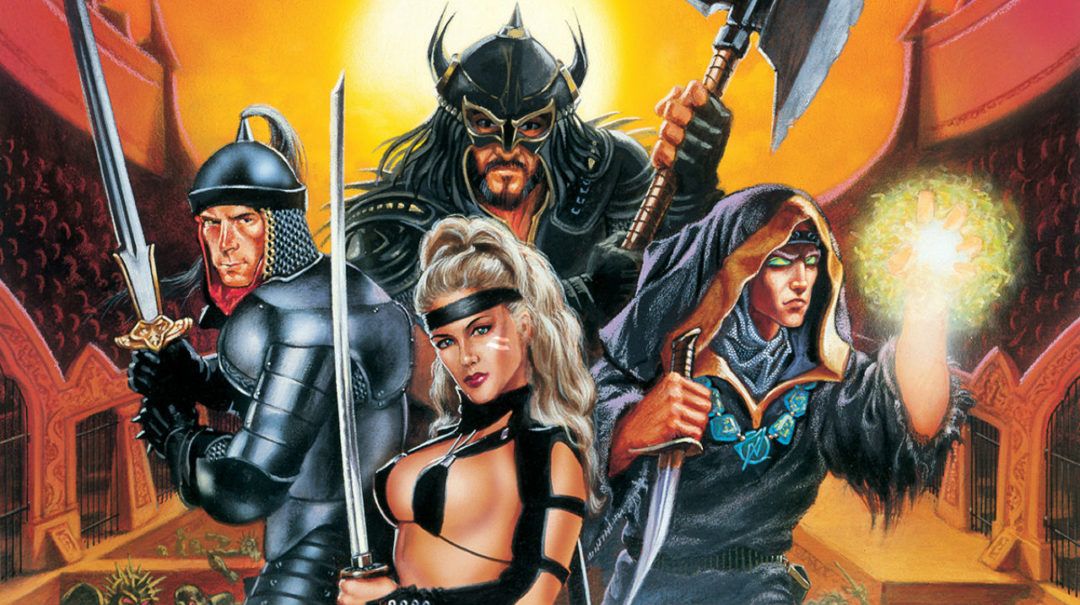

The production of HBO's new Harry Potter TV series will include the construction of a temporary school that can house up to 600 pupils.
Cast members will attend classes alongside their filming duties, with around 150 children expected to attend daily lessons, and space for up to quadruple this amount at peak periods, BBC News has reported.
The need to juggle filming with school time was also a consideration for the stars of the previous Harry Potter films — but the creation of a temporary school goes further, and speaks to the enormous size of the TV show's production, which is due to feature a cast of hundreds and last for the "next decade."
The school, housed in portable buildings at Warner Bros. Studios Leavesden, and overseen by the Three Rivers Disctrict Council, will be open from 5.30am each weekday morning until 8.30pm each evening, in order to fit studies around day and night filming. It's there that children, including the series' core stars, will attend lessons while being available to film when needed — swapping arithmetic for arithmancy as appropriate.
According to planning application documents seen by the BBC, the school will be in place "for the next 8-10 years" but be dismantled afterwards.
HBO marked the beginning of the series' filming this week with the release of a photo showing Dominic McLaughlin, the young actor now playing Harry Potter, in costume for the first time. This was then followed by a first look at Shaun of the Dead star Nick Frost in costume as Hagrid.
The production plans to adapt each of the Harry Potter books into a full season of TV episodes, with the first set to air in 2027.
Alongside a small army of children, veteran actor John Lithgow will play Albus Dumbledore, with Janet McTeer as Minerva McGonagall, Paapa Essiedu as Severus Snape, Paul Whitehouse as Argus Filch and Katherine Parkinson as Molly Weasley.
Tom Phillips is IGN's News Editor. You can reach Tom at tom_phillips@ign.com or find him on Bluesky @tomphillipseg.bsky.social

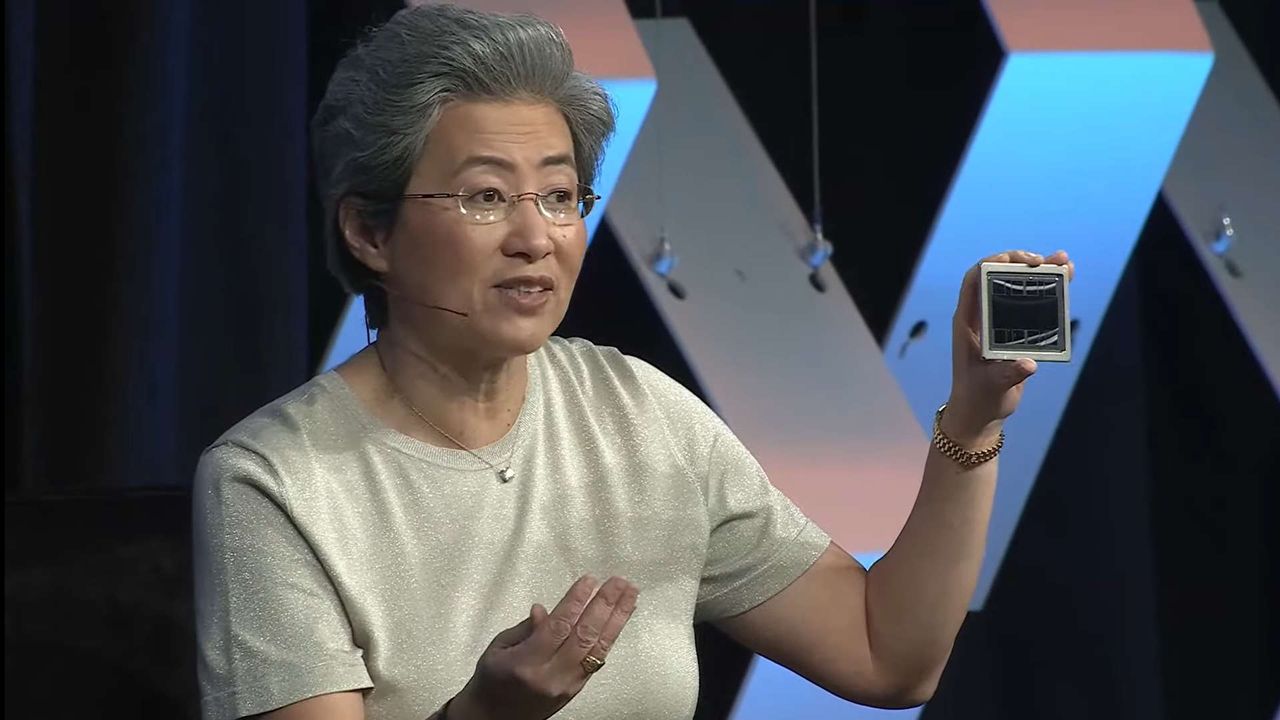
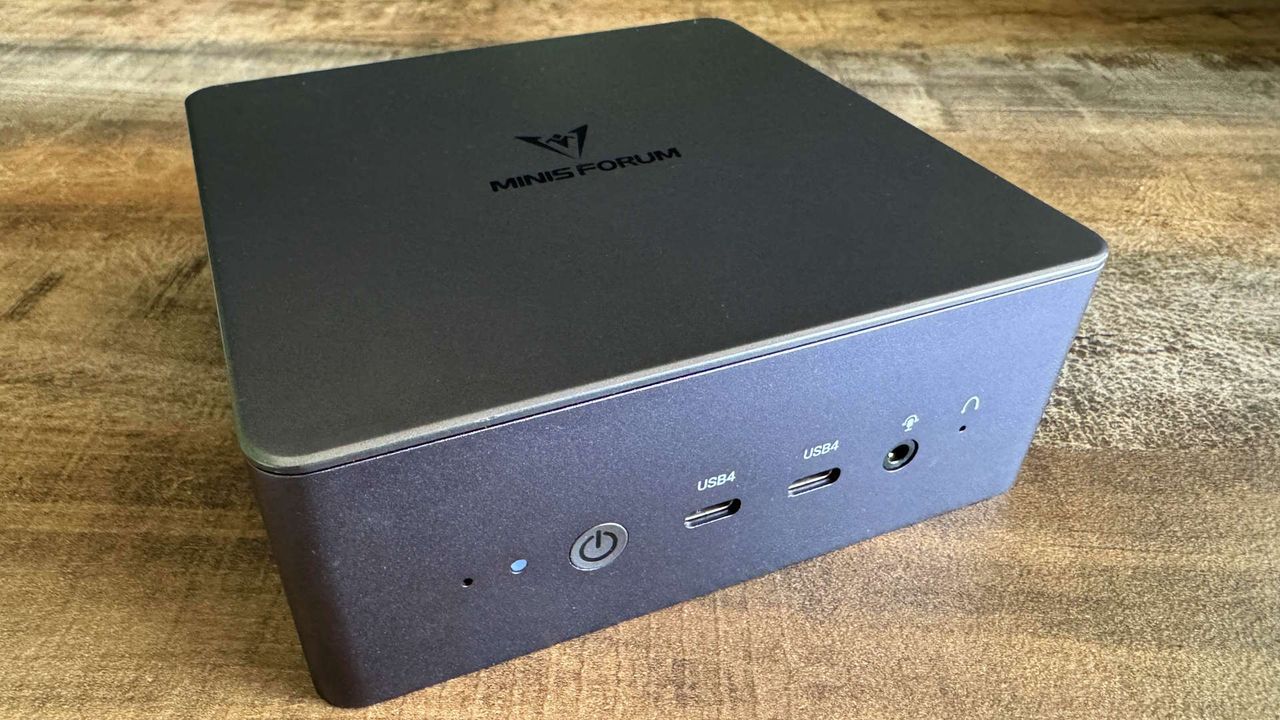

The Pokémon World Championships in Anaheim, CA are just around the corner in August, and with it comes an exclusive line of cute Pokémon merch, which IGN has an exclusive first look at. Each year, the Pokémon World Championships hosts a special Pokémon Center pop-up shop, and we’re getting three uniquely themed exclusive lines out of the event this time. Last year, we got a tropical, Hawaiian-themed Pokémon line. Check out the unique new Pokémon items, including a first-ever Pokémon bodyboard, below.
“In honor of this year’s Anaheim, CA location, Pokémon Center will be releasing three product lines – the Varsity Line, SoCal Beach Skater Line, and Rockabilly Line,” said Cindy Ruppenthal, senior director of Pokémon Center and e-commerce at The Pokémon Company International. “This year’s collection draws inspiration from bright, retro-diner design, blending vibrant colors and nostalgic elements that capture the spirit of our SoCal location.”
Check out a large selection of the exclusive merch that will be at the Pokémon World Championships in the slideshow above, but keep in mind, this won’t be everything!
The 2025 Worlds Pikachu Plush sporting a varsity jacket, revealed at this year’s North America International Championships in New Orleans, is sure to be a popular item along with the other SoCal-themed plush of Fennekin, Machamp, and Jigglypuff, but there’s a lot more to look forward to.
The standout premiere item this year is the SoCal Bodyboard, which is fully functional for riding waves at the beach, and is priced at $79.99 USD.
Ruppenthal “expects strong demand” for the SoCal Bodyboard along with other functional items from the SoCal Beach Skater Line, like the SoCal Beach Towels.
“Additionally, following popular reception from Pokémon Worlds in Honolulu, we teamed up with Reyn Spooner to create a Pokémon Aloha shirt, bucket hat, tote, and more to celebrate the event in Anaheim,” Ruppenthal said.
The Reyn Spooner Pokémon Aloha shirts from last year were so popular that I witnessed an attendee offer $300 for the shirt off someone’s back, literally, since they had sold out.
“With this year’s California location, it felt like the perfect moment to reintroduce the
apparel collaboration as our laid-back, SoCal designs align perfectly with Reyn Spooner’s bright, beach vibe and signature Aloha shirts,” Ruppenthal said.
As far as other exclusive apparel goes, there will be a varsity jacket, “as well as other standout apparel that matches the various design styles offered this year,” Ruppenthal said.
Most surprising of the designs overall this year is probably the Rockabilly line, featuring Arcanine, Squakabilly, and an edgy Pikachu wearing a leather jacket and sunglasses.
“We always keep in mind that the Pokémon community has diverse interests and styles, and as such, wanted to introduce a bolder counterpart to the Varsity Line and SoCal Beach Skater Line,” Ruppenthal explained. “The Rockabilly Line features darker tones and edgier styling – all while staying true to the retro-diner theme found throughout the Pokémon Center Pop Up Shop. It complements the store design, which takes fans through a journey (beach to boardwalk to nighttime).”
The theming Ruppenthal describes is important, as the Pokémon Center Pop Up Shop at the Pokémon World Championships each year isn’t just a plain holding room for goods, but more of an immersive experience to explore while shopping, complete with set pieces and unique art.
Usually, all of the Worlds merch revealed here would be exclusive to the in-person Pokémon Center, which actually runs an additional two days ahead of the 2025 Pokémon World Championship, from August 13 to August 17. However, this year, there will be a Pokémon Center special online-only shopping promotion taking place that same week. During this time, the 2025 Pokémon World Championships Coin will be available online.
We don’t know anything else about this online shopping event, like whether any other 2025 World Championship items will be available, but Ruppenthall said, “It’s our way of making sure more fans can take part in the celebration.”
If you are attending in person, keep in mind that you usually need to make a separate Pokémon Center pop-up store reservation, but right now, the Anaheim 2025 Pokémon Center page says, “More information on how to attend the Pokémon Center pop-up store is coming soon!”
We’ll be sure to cover the Pokémon Center Pop Up Shop and a lot more during the 2025 Pokémon World Championships from August 15 to August 17 in Anaheim, so stay tuned for updates.
Casey DeFreitas is a deputy editor of guides at IGN. Catch her at the 2025 Pokémon World Championships, or on socials @ShinyCaseyD.